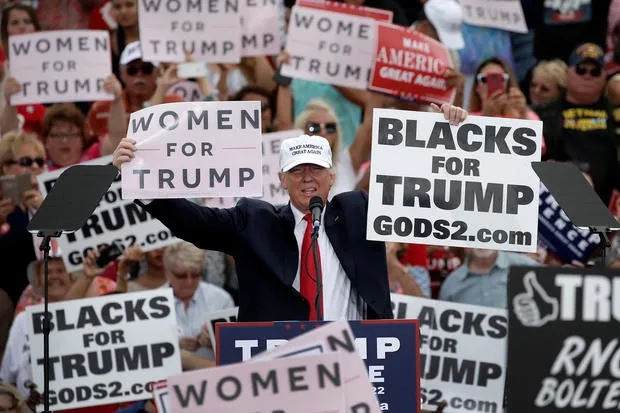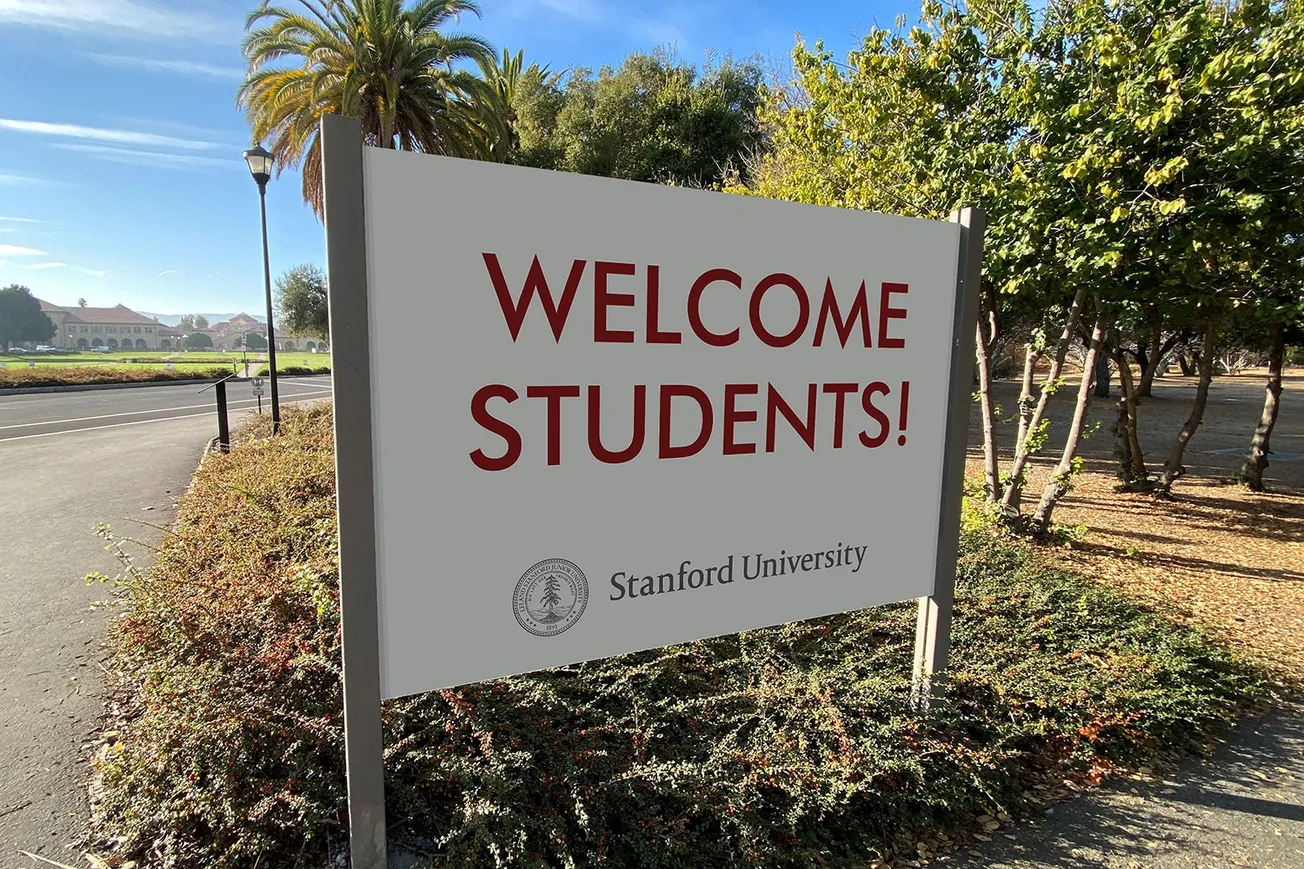Table of Contents
The Stanford campus’ reaction to Trump’s election was dominated by feelings of hopelessness and anger. Facebook newsfeeds on November 8, 2016 were filled with claims about the anti-women, anti-LGBT, and anti-minority implications of the election, often from privileged students who spoke for others. Three months later, Stanford students continue to disagree on whether Trump supporters deserve to be understood. Though many displayed the empathy for which we’ve advocated at the Stanford Review, many still refuse to see Trump supporters as anything other than bigoted white males.
Over the last few months, however, I’ve had the privilege to speak with Stanford’s minority Trump supporters. Because Stanford is overwhelmingly liberal, many whom I reached out to did not even feel comfortable speaking with me. Those that did often requested anonymity, a testament to the fact that this campus is far from truly encouraging open dialogue.
The individuals that I interviewed did not display the least bit of ignorance or prejudice. In fact, they displayed a level of thoughtfulness and intelligence that far surpassed that of the average Stanford student. Their insights send a powerful message about the dangers of homogenization and identity policing, and should force us all to rethink how we regard minority groups on campus, as well as the Stanford students that voted for Trump.
Caleb Shongwe, the only interviewee brave enough to put a face on his opinions, is a black freshman living on east campus. Reading books like Thomas Sowell’s Basic Economics attracted him to laissez-faire economic principles, and his faith in fiscal conservatism drew him to the GOP. Caleb remarked that eight years of Obama failed to improve the economic situation of African-Americans, and hopes that Trump’s policies will better empower blacks.
“I think that the best way to empower black people economically is to remove government largesses. We need to remove regulations to help the inner cities and black communities and remove wage controls, such as the Davis-Bacon Act, which was originally passed to replace unskilled black labor with white union labor. Also, removing welfare programs would lower incentives for non-productivity and behavior like out-of-wedlock births,” Caleb said.
He supported his argument by pointing out that, “despite the explicit racism during the 1940s and ’60s, the black poverty rate was sharply declining, communities were beginning to become more integrated, unemployment for young black and white individuals were virtually the same and African Americans had a higher labor force participation rate.”
When I pressed Caleb to explain the overwhelming black vote for Hillary, he argued that Democrats have brilliantly controlled the historical narrative of racial justice to maintain the allegiance of African-American communities. Caleb remarked that “the intelligentsia, dominated by the left, claim disparities between whites and blacks are inevitable because of the white supremacy that control our institutions. Thus, they convince us [that] the solution to help black communities is to increase the scope and influence of government. As black communities get poorer and poorer, intellectuals use this as evidence to further their narrative.”
Bob Samuels, a pseudonym to protect this student’s anonymity, is another black freshman who shared sentiments similar to Caleb’s. Interestingly, he framed the black community’s strong support for Democratic candidates in terms of groupthink. Bob argued that, in order to prove allegiance to the race, black people adhere to stereotypes that are attributed to them, making individuality dangerous. “While black people think diversely, their ‘best interest’ is often characterized by black media personalities and activists like [Al] Sharpton and [Jesse] Jackson…Black activist media personalities hold special sway over the voting action of the group because they are the ones that politicians hear the loudest. To a politician, they get to control the agenda of the black community because they’re accessible, but it’s the desire to confirm blackness and feel a sense of belonging that promotes the groupthink phenomenon that is demonstrated in voting and political actions taken by black people.”
Bob’s conservatism stems from experiences in his hometown, where corruption and special interests dominated the Democratic Party and made them unaccountable to their constituents. Bob saw parallels between such nepotism and Hillary’s dealings with the Clinton Foundation and her emails, as well as her obligations to outside groups and donors. To Bob, Trump was a powerful alternative to the corrupt politics of his community.
Both Caleb and Bob rejected most of Trump’s rhetoric. Yet their reactions to such rhetoric differed markedly from most students. While Caleb excused much of what Trump said due to his lack of eloquence, Bob took an even stronger stance on the issue, blaming the media and Stanford students for blowing up Trump’s comments to pander to identity politics and forge artificial divisions. Bob believes that this actually exacerbated campaign-season bigotry by pitting different groups of people against each other. Simultaneously, Bob also criticized the hypocrisy of Stanford students, whom he believed focused disproportionately on race and gender while ignoring other elements of one’s identity like religion and class.
The gut reaction of many Stanford students may be to dismiss the experiences of Caleb and Bob as falling outside the realm of authentic black experience. But Caleb and Bob’s perspectives are not irrational or fringe — a more-than-convincing argument can be made that Obama’s policies of bigger government and more spending have worsened the economic condition of African-American communities, and even the New York Times published a post-election piece condemning the Clinton campaign’s focus on identity politics. Writing off their opinions would signal an unwillingness to challenge the beliefs most familiar to us.
Mary Thomas (another pseudonym), a freshman, is a white female Trump supporter. She is one of the 53% of white women who cast their vote for Trump, despite his misogynistic rhetoric and allegedly “anti-woman” opposition to abortion. Mary had a personal stake in this election. Her family, mainly farmers, had been deeply harmed by the Obama administration’s intensive EPA regulations, especially over land use and water. She hopes that Trump will scale back such regulations, empowering her family again. Because Mary is strongly pro-life, she also fears a liberal-majority Supreme Court.
Interestingly, like many on campus, she took much of Trump’s bigotry literally and even condoned the backlash such rhetoric received on Stanford’s campus. To this day, she struggles with reconciling her personal stakes in the election with the potential harm that Trump’s election has brought towards others.
Nonetheless, Mary wishes for a more open campus culture, remarking that “overall, I wish Stanford students would attempt to actively engage with individuals who disagree with them politically.” Mary felt that an assumed consensus on women’s issues especially crowded out more conservative female students. She thus criticized the politically-charged nature of the Women’s March, remarking that: “[while] I wholeheartedly support the right of individuals to march for a cause…the [Women’s] March seemed exclusive to pro-choice women, and a lot of modern feminism is geared toward white, cis, pro-choice women who in this case voted for Hillary Clinton. There are millions of women who don’t fit that description. I think it’s one thing to push for equality for all women in principle, but it’s another to gear your march and your movement toward a specific group of women.”
Rachel Marquez (a pseudonym to preserve anonymity), is a Hispanic female freshman. Unlike Mary, she had less of a personal stake in the election, but more of a philosophical one. Rachel is fiscally conservative but socially libertarian, and advocates lower taxes, increased investment in the military, and an end to the welfare state. Rachel went to Trump rallies early on in the campaign, and describes them as drastically different from their representations in the media.
When I pressed Rachel on Trump’s rhetoric against Hispanics and women, she argued that Stanford students should fixate less on their group and more on their individual identities: “I think what makes me a little bit different is that I don’t identify myself by my race or that I’m a woman. The smallest minority is the individual, and that’s the minority we should focus on protecting. I think when you just think of yourself in terms of identity politics … you create division … I feel like on campus there’s too much of a focus on what your identity is and what makes you diverse and that that’s what should define you.” Rachel also believed that agreeing with a candidate’s every word is a ridiculously high standard: “That was the problem — people tended to focus on the problems and not the substance. The reason most people voted for him was because of what he had to offer.”
Rachel also challenged stereotypes of identity groups’ political interests. Pointing to the increased Hispanic support for Trump over Romney, she remarked that: “I knew a lot of Mexicans who voted for Trump, but people here were surprised because they tend to shut people off from political discourse. When you put so much work to come to this country and get the American Dream, it’s kind of disheartening to see someone jump the line and come here illegally.” In fact, the media and Stanford students’ stereotypes of Trump supporters as “backwards and racist and xenophobic … just made people turn more to him, because no one likes to be shamed and demeaned for supporting a candidate.”
It would be premature to dismiss the perspectives of Mary and Rachel; they were part of the 42% of women in America and 29% of Hispanics who voted for Trump. It was only three days ago that the New York Times published a blistering attack on the hypocrisy of liberal women, especially those who participated in the Women’s March. Conservative women tend to prioritize a candidate’s adherence to free-market principles and limited government over his or her rhetoric about the opposite gender. It isn’t internalized sexism, either — over 78% of those who voted for Trump disapproved of his treatment of women.
There are surely Trump supporters who voted out of bigotry and hatred. But we must also realize that many made thoughtful and reasoned decisions based on their unique experiences and philosophies. Developing a collective consciousness is undoubtedly crucial in the fight towards ending structural inequality. Yet, at the same time, the stories of such highly-educated minority students should help us realize that diversity of political opinions exists within these groups. We don’t have to leave the Stanford bubble in order to better understand Trump’s America.





